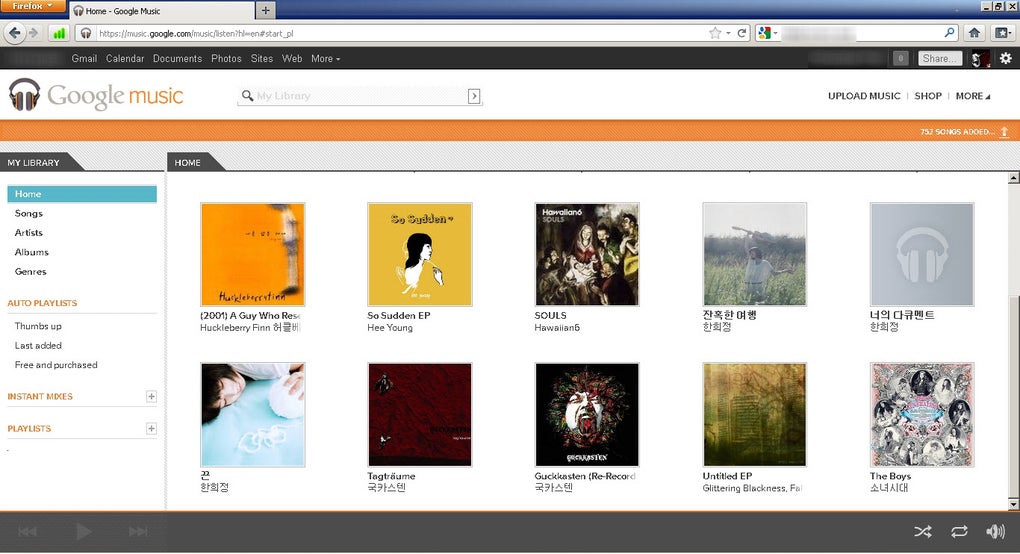

- #Google music manager ubuntu 14.04 how to#
- #Google music manager ubuntu 14.04 install#
- #Google music manager ubuntu 14.04 download#
- #Google music manager ubuntu 14.04 windows#
Configuring the SNMP Agent MachineĪs a true client-server system, the agent computer does not have any of the external tools needed to configure its own SNMP setup. We are now finished configuring the manager portion, but we will still need to use this server to help us configure our agent computer.

Save and close the file when you are finished. To allow the manager to import the MIB files, we simply need to comment out the mibs : line: #mibs : In this file, there are a few comments and a single un-commented line. Open the /etc/snmp/nf file in your text editor with sudo privileges: sudo nano /etc/snmp/nf We just need to modify one file to make sure that our client can use the extra MIB data we installed. Configuring the SNMP ManagerĪs we mentioned above, most of the bulk of the work happens in the agent component, so our configuration is actually pretty easy on this machine. Now that you have installed these components, we need to configure our setup.
#Google music manager ubuntu 14.04 install#
On our second server, the one that we will be interacting with that will run the daemon, we can install the necessary components by typing: sudo apt-get update Sudo apt-get install snmp snmp-mibs-downloader
#Google music manager ubuntu 14.04 download#
Along with this, we will also download another package called snmp-mibs-downloader which contains some proprietary information about standard MIBs that allow us to access most of the MIB tree by name: sudo apt-get update On the first server, update the apt database and install the manager component. We could choose to install the agent on the manager machine as well, but keeping them separate makes it easier to demonstrate what functionality is provided by each component. We will use two servers, one will contain the manager portion, while the other server will have the agent. We can begin to explore how SNMP can be implemented on a system by installing the daemon and tools on some Ubuntu systems. We will be using two Ubuntu 14.04 servers to demonstrate, but most other systems should be able to follow along with a few modifications.
#Google music manager ubuntu 14.04 how to#
In this guide, we will begin to demonstrate how to setup the tools to communicate using SNMP. In our last guide, we learned about the basics of the SNMP protocol. While the protocol itself is very simple, the structure of programs that implement SNMP can be very complex. It is a way that servers can share information about their current state, and also a channel through which an administer can modify pre-defined values. SNMP stands for simple network management protocol.

Many of them are built upon a technology called SNMP. There are a number of tools and options for gathering and processing this type of information. Tap an installed app to launch it or tap an available app to view more details and install it.A large part of being a system administrator is collecting accurate information about your servers and infrastructure. Here you’ll find apps you have installed and apps available to install. In the future, the desktop and touch versions of Ubuntu will use the same version of Unity and Unity will adjust its interface depending on what type of device you’re using. This isn’t a surprise - Canonical wants the desktop and touch versions of Ubuntu to use the same code. This is actually very similar to the Dash on Ubuntu’s Unity desktop. Swipe in from the right edge of the welcome screen to access the Dash, or home screen. RELATED: How to Master Ubuntu's Unity Desktop: 8 Things You Need to Know If you don’t, you’ll just see a message saying “No data sources available.” If you have new emails, text messages, or other information, it will appear on this screen along with the time and date. You’ll see the welcome screen when you boot up or unlock a Ubuntu tablet or phone.
#Google music manager ubuntu 14.04 windows#
Ubuntu’s touch interface is all about edge swipes and hidden interface elements - it has a lot in common with Windows 8, actually.

RELATED: 5 Things You Need to Know About Ubuntu 14.04 LTS


 0 kommentar(er)
0 kommentar(er)
